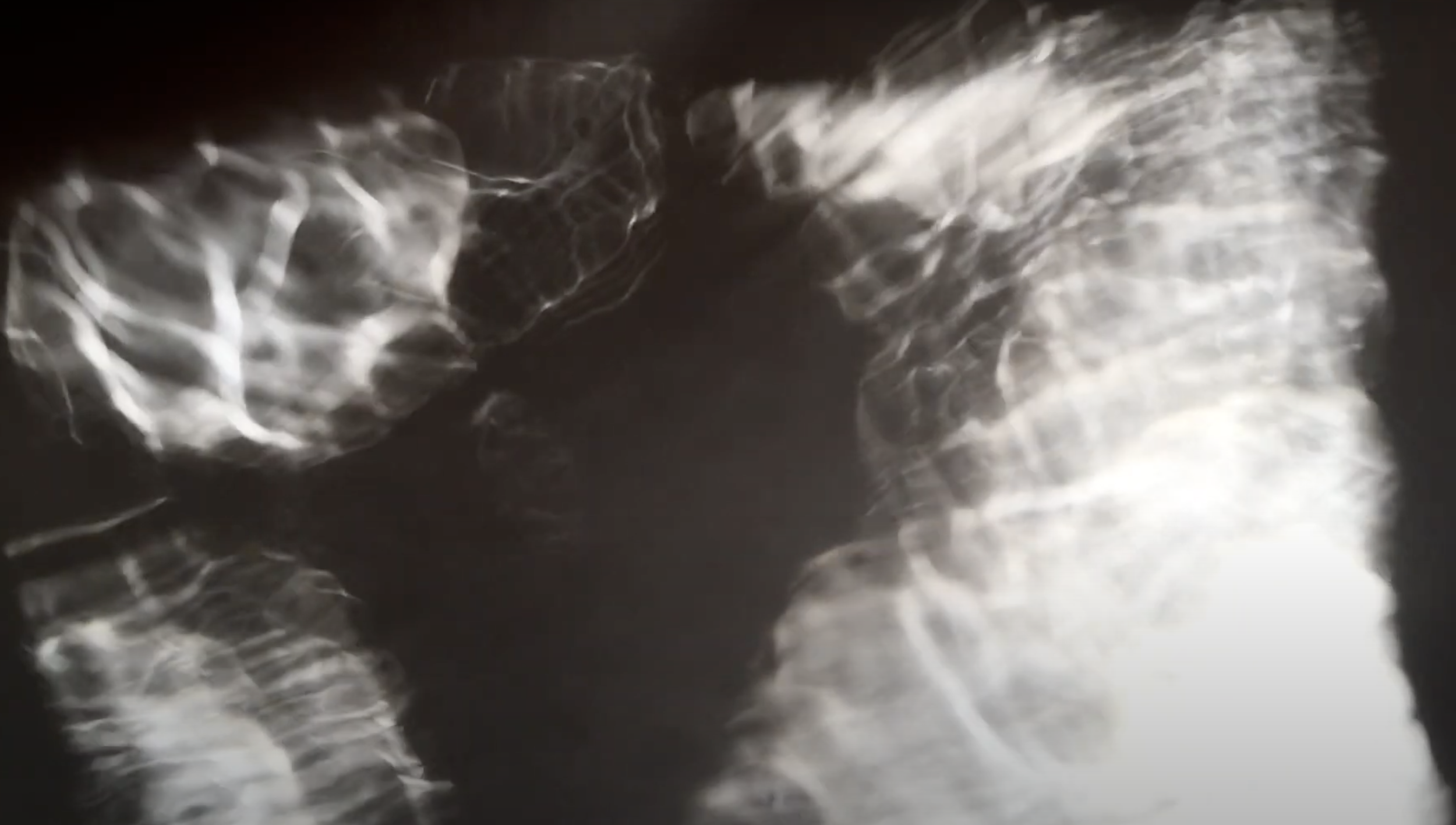Three threads of new materialism
Before exploring the knot of Braidotti’s zoe/geo/techno assemblage, there are three threads within new materialism to unravel: the agency of matter, the Anthropocene and a world beyond human centrism. The notion of making in an environment with no hierarchical structures gives all matter equal status within the space. This environment might enable the development of a process of thinking through and with matter beyond theoretical structures, enabling material space to reveal its agency (Bennett, 2010, p.9). As I pursue an ontological method of thinking through making, the feminist new materialists, Karen Barad (2007), Claire Colebrook (2014), Diana Coole and Samantha Frost (2010), Stacy Alaimo and Susan Hekman (2008), provide conduits for me to incorporate scientific, socio-political, and conceptual fields of knowledge into my practice. Thinking through making enables new knowledge to emerge as new entities, events, and encounters (Tracks & Traces 2022, The Knot 2022, 31/10/2012-21 2021 and Beyond the Void 2019)[1].
As I began to focus on the agency of matter (Barad, 2007), the Anthropocene (Colebrook, 2014) (Coole and Frost, 2010), and a world beyond human centrism (Alaimo and Hekman, 2008), the knot became a tool through which to re-consider[2] the theoretical, physical, and sensual as properties of materials within my practice-based research.
The agency of matter
Image from Diffractive Film (2020) – Lynda Beckett
Matter[3], as ‘a dynamic and shifting entanglement of relations, rather than a property of things’ (Barad, 2007, p. 224), first caught my eye as diffractive light patterns (Diffractive Film 2020)[4]. These patterns made me think about matter in a new way. From a new materialist perspective, matter is energy in motion rather than static (Coole and Frost, 2010, pp. 7–15). Ancient and modern materialism consider matter as passive and non-performative (Gamble et al., 2019, p. 113). Breaking these bonds challenges a human-centred ontology and creates a space to work with materials without hierarchical and dualist structures.
Niels Bohr’s two-slit experiment, exploring the agency of matter, as interpreted by Barad (2007, pp. 81-84), made me rethink my once-controlling relationship with material. How might I engage with materials without human privilege, thinking about them as dynamic entities in motion, while acknowledging the material's agency and surrounding space?
The Anthropocene
Claire Colebrook’s (2014) thoughts about the Anthropocene entangle with those of fellow theorists, Diana Coole and Samantha Frost (2010). Their thinking highlights humanity's catastrophic impact upon itself, other species and ecologies for political and hedonistic gain, and reinforces my responsibilities towards the world I inhabit. Coole and Frost propose an engagement with materials as entities with life force and flow, within a shared environment, and they acknowledge ethical and political concerns will emerge. Their emphasis is for us to acknowledge our exploitation of the living organism we inhabit (Coole and Frost, 2010, pp. 5–7), while Colebrook reminds us that we cannot escape the impact of climate change. Yet, absurdly, we continue to exploit the world we are bound within as a species.
We need to acknowledge the power of Nature’s materials displaying agency. From a feminist posthuman perspective, as an artist embedded within my environment, I want to reconsider my relationship with materials as we, the materials and I, make. As I write, I am conscious of my environment, the lithium and other materials taken from the earth that make this research possible. This inquiry will endeavour to break the hierarchical structures of human centrism as we (the materials and I) work together to unfold and fold the knot.
A world beyond human centrism
I turn to Stacy Alaimo, who proposes that ‘we think as stuff of the world’ (2016, p.14). As part of the ‘stuff’, we become embedded in our environment and aware of what it is like for other creatures to inhabit a world we abuse. Alaimo’s practice of thinking as part of the environment, where the subject is ‘already part of the substances, systems and becomings of the world’ (ibid., p. 14), aligns with my posthuman new materialist thinking. Alaimo’s concepts parallel Barad’s notion that ‘there is no ‘I’ separate from the intra-active becoming of the world’ (2007, p. 394) . This democratisation of materials decentralises the human and aligns with Jane Bennett’s (2010) notion of ‘vital materiality’, questioning human superiority over other life forms and inanimate materials. Bennett also recognises the agency of materials and acknowledges them as forces with energy. As a maker, I cannot ignore this. I work with materials, bodies that have the capacity to be active, have effect (2010, p. 5), and affect[5]. If humans acknowledge the agency of materials, would it not follow that they have a platform to be affective and emit the sensual?
[1] Artworks to be found at my website, https://www.lyndabeckett.org/.
[2] The hyphen between re and consider allows for a continuous flow of considering and reconsidering, a motion that is always in flux.
[3] Matter is not opposed to information, thought, or knowledge – matter is the raw material before it takes form and is multi-dimensional.
[4] Diffractive Film (2020) - https://www.lyndabeckett.org/#/diffractive-film-2019/ This videos is one in a series I have captured during my research.
[5] According to Simon O’Sullivan, ‘affects are moments of intensity, a reaction in/on the body at the level of matter’ (2001, p.126).
